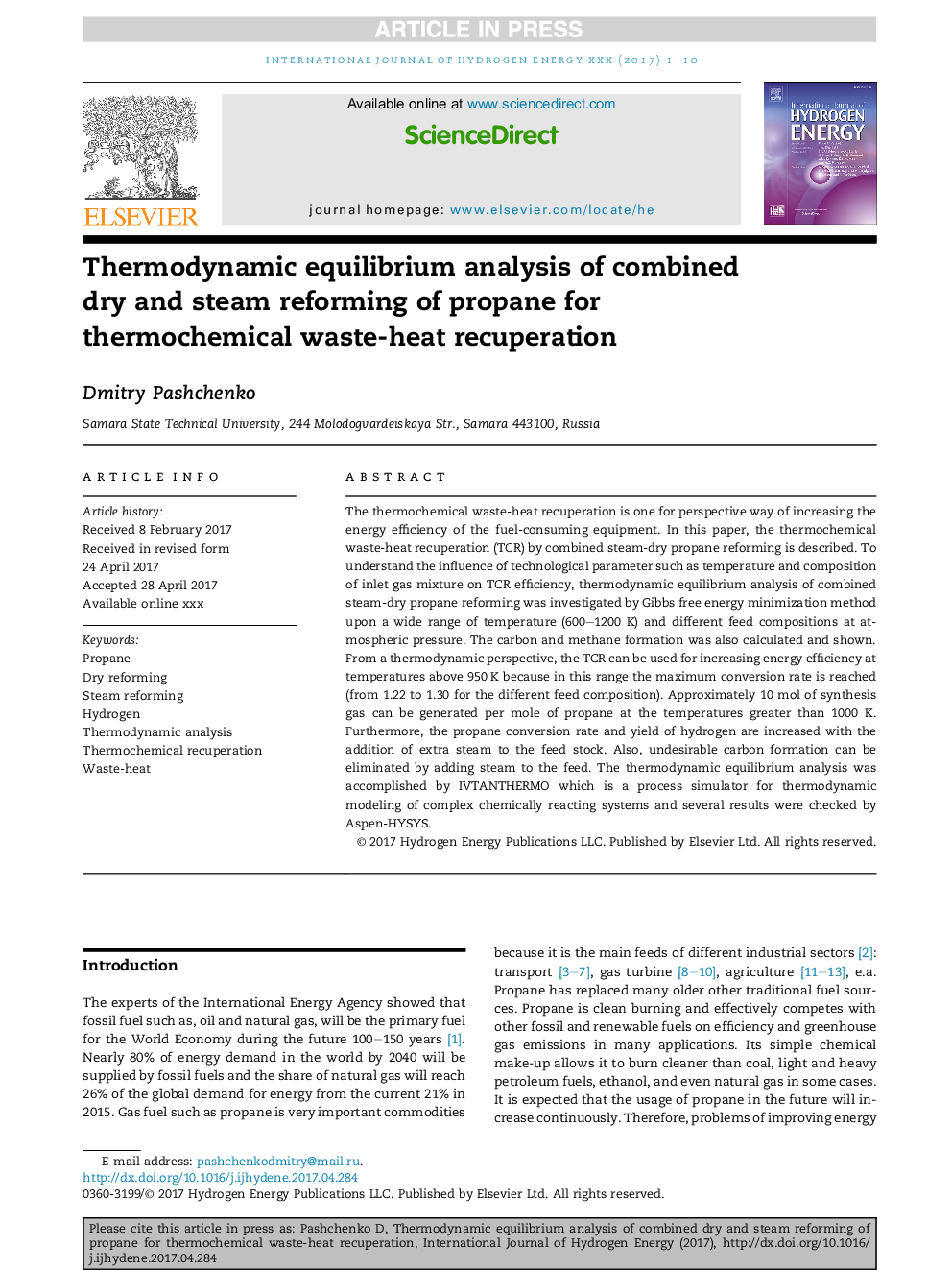| Article ID | Journal | Published Year | Pages | File Type |
|---|---|---|---|---|
| 5147586 | International Journal of Hydrogen Energy | 2017 | 10 Pages |
Abstract
The thermochemical waste-heat recuperation is one for perspective way of increasing the energy efficiency of the fuel-consuming equipment. In this paper, the thermochemical waste-heat recuperation (TCR) by combined steam-dry propane reforming is described. To understand the influence of technological parameter such as temperature and composition of inlet gas mixture on TCR efficiency, thermodynamic equilibrium analysis of combined steam-dry propane reforming was investigated by Gibbs free energy minimization method upon a wide range of temperature (600-1200Â K) and different feed compositions at atmospheric pressure. The carbon and methane formation was also calculated and shown. From a thermodynamic perspective, the TCR can be used for increasing energy efficiency at temperatures above 950Â K because in this range the maximum conversion rate is reached (from 1.22 to 1.30 for the different feed composition). Approximately 10Â mol of synthesis gas can be generated per mole of propane at the temperatures greater than 1000Â K. Furthermore, the propane conversion rate and yield of hydrogen are increased with the addition of extra steam to the feed stock. Also, undesirable carbon formation can be eliminated by adding steam to the feed. The thermodynamic equilibrium analysis was accomplished by IVTANTHERMO which is a process simulator for thermodynamic modeling of complex chemically reacting systems and several results were checked by Aspen-HYSYS.
Keywords
Related Topics
Physical Sciences and Engineering
Chemistry
Electrochemistry
Authors
Dmitry Pashchenko,
